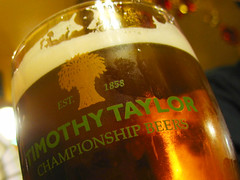
My route to work skirts what will be the Olympic Park - there's a cycle path between Leyton and Hackney Wick. The road traffic thunders to my right, and the 2012 games site grows at a barely believable rate on my left. There's always something new to see, and often something new to avoid. Yesterday a series of holes had been dug in the middle of the cycle path. In the fenced-off spoil heap I saw this bottle.
"If that's still there on my way home, I'm having it" I said to myself. If whoever dug it out wanted it, they'd have taken it. It's better in our house than back underground or broken up. 6.45pm and there I am, digging away under the fence like a fox after a chicken.
So, dear visitors - any idea what it would have once held? There's a similar (but cruder) one on the Museum Of London website, described as a 'Spirit Flask'. Which spirit? Gin? Whisky? Intriguingly, it's got a glass marble sealing the neck which is threaded for a (presumably) rubber bung. Something inside rattles. There aren't any markings on the bottle at all. I sincerely hope I haven't brought home a latter-day Witch Bottle.
According to my stats this blog gets about 12 visitors a day. They can't all be spambots. Don't be shy - say hello. Especially if you know about stoneware bottles.














